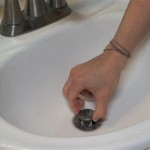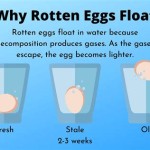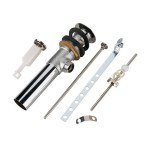Understanding the Lindy No-Snagg Slip Sinker: A Comprehensive Guide
The Lindy No-Snagg Slip Sinker is a popular and effective fishing weight designed to minimize snagging in areas with heavy cover, such as rocks, weeds, and timber. Its unique design allows anglers to fish these challenging environments more confidently and efficiently, increasing their chances of landing fish. This article will provide a comprehensive overview of the Lindy No-Snagg Slip Sinker, covering its design features, applications, advantages, and proper usage.
The Lindy No-Snagg Slip Sinker, unlike traditional egg sinkers or bullet weights, is characterized by its elongated, bullet-shaped profile and a smooth, tapered front end. This streamlined shape is crucial in reducing the likelihood of catching on submerged obstacles. The sinker typically features a large, centrally located hole through which the fishing line passes freely. This "slip" design allows the angler to detect subtle bites because the fish can take the bait without immediately feeling the weight of the sinker.
The sinker is commonly constructed from lead or tungsten. Lead sinkers are generally more affordable and readily available, while tungsten sinkers offer a higher density, allowing for smaller, more compact profiles for the same weight. This is particularly advantageous in situations where anglers want to minimize the visual impact of the sinker or need to penetrate thick vegetation.
Key Feature: The Anti-Snag Design
The primary function of the Lindy No-Snagg Slip Sinker is to reduce the incidence of snagging. This is achieved through several design elements working in concert. The elongated, streamlined shape allows the sinker to slide more easily over and around obstructions. The smooth, tapered front end helps to deflect the sinker away from potential snag points, preventing it from getting wedged between rocks or tangled in weeds.
The free-sliding design of the sinker also contributes to its anti-snag capability. When the sinker encounters an obstacle, the line can slip through the hole, allowing the angler to pull the bait free without dragging the sinker further into the snag. This is particularly beneficial in situations where the fish are holding tight to cover and the bait needs to be presented close to the structure.
The choice of material also contributes to the overall snag resistance. Tungsten, due to its higher density, allows for a smaller sinker profile for a given weight. This smaller profile makes it less likely to get caught in tight spaces and reduces the overall drag in the water, making it easier to feel subtle bites even in heavy cover.
Applications and Techniques
The Lindy No-Snagg Slip Sinker is versatile and can be used with a variety of fishing techniques. It is particularly well-suited for fishing in areas with heavy cover, such as rocky bottoms, weed beds, and submerged timber. Some common applications include Texas rigging soft plastics, Carolina rigging, and dragging baits along the bottom.
When Texas rigging, the sinker is typically placed directly above the hook and a soft plastic bait, such as a worm, creature bait, or lizard, is rigged weedless. This allows the bait to be presented close to the bottom and worked through cover with minimal snagging. The free-sliding design of the sinker allows the fish to take the bait without feeling the weight, increasing the chances of a solid hookset.
Carolina rigging involves placing the sinker above a swivel, with a leader line connecting the swivel to the hook and bait. This technique allows the bait to be presented slightly off the bottom and can be effective for targeting fish that are suspended above the cover. The length of the leader can be adjusted to control the depth at which the bait is presented.
Dragging baits along the bottom is another common application. The Lindy No-Snagg Slip Sinker allows the angler to maintain contact with the bottom while minimizing the risk of snagging. This technique is particularly effective for targeting bottom-dwelling fish, such as bass and catfish.
The weight of the sinker should be chosen based on the depth of the water, the strength of the current, and the type of cover being fished. Lighter sinkers are generally preferred for shallow water and light cover, while heavier sinkers are necessary for deeper water and heavier cover. It is important to use a sinker that is heavy enough to maintain contact with the bottom but not so heavy that it impedes the action of the bait or causes excessive snagging.
Furthermore, the color of the sinker can be a factor in certain situations. While not always critical, some anglers prefer to use sinkers that match the color of the bottom or the surrounding cover. This can help to make the presentation more natural and less likely to spook wary fish.
Advantages of Using the Lindy No-Snagg Slip Sinker
The Lindy No-Snagg Slip Sinker offers several advantages over traditional fishing weights, particularly in challenging fishing environments. The most significant benefit is its ability to reduce snagging, allowing anglers to fish in areas that would otherwise be inaccessible.
The free-sliding design of the sinker also enhances bite detection. Because the fish can take the bait without immediately feeling the weight, anglers are more likely to detect subtle strikes that might otherwise go unnoticed. This is especially important when fishing for finicky fish or in areas with heavy cover, where the fish may be hesitant to commit to the bait.
The versatility of the Lindy No-Snagg Slip Sinker is another advantage. It can be used with a wide variety of fishing techniques and baits, making it a valuable addition to any angler's tackle box. Whether Texas rigging soft plastics, Carolina rigging, or dragging baits along the bottom, the Lindy No-Snagg Slip Sinker can help anglers to fish more effectively and efficiently.
The availability of the sinker in different materials, such as lead and tungsten, provides anglers with additional options to customize their presentation. Tungsten sinkers, in particular, offer a higher density, allowing for smaller, more compact profiles that can be advantageous in certain situations, such as when fishing in clear water or when targeting wary fish.
Finally, the Lindy No-Snagg Slip Sinker is relatively easy to use and requires minimal adjustment to existing fishing techniques. Anglers can quickly incorporate the sinker into their rigs and begin fishing with confidence, knowing that they are reducing their risk of snagging and increasing their chances of catching fish.
In addition to the core advantages, the sinker's design promotes environmental responsibility. By reducing snags, anglers lose fewer rigs, leading to less discarded fishing line and tackle in the water. This contributes to a cleaner and healthier aquatic ecosystem.
Weight selection is crucial for optimal performance. Matching the weight to the targeted species, water depth, and current strength is essential. Experienced anglers often carry a range of weights to adapt to changing conditions. Lighter weights are suitable for shallow water and light cover, while heavier weights are necessary for deeper water and stronger currents.
Line selection also plays a critical role in the effectiveness of the Lindy No-Snagg Slip Sinker. Low-stretch lines, such as fluorocarbon or braid, are generally preferred because they provide better sensitivity and allow for quicker hooksets, especially when fishing in heavy cover.
The hookset technique should be adjusted based on the type of bait being used and the behavior of the fish. When fishing with soft plastics, a sweep-set or a more aggressive hookset may be necessary to penetrate the fish's mouth. It is important to maintain constant pressure on the fish once it is hooked to prevent it from running back into cover and snagging the line.
Proper maintenance of the fishing line and tackle is also important to prevent snags and ensure the longevity of the equipment. Regularly inspect the line for abrasions or weaknesses and replace it as needed. Keep the hooks sharp and the reel properly lubricated to ensure smooth operation.
The Lindy No-Snagg Slip Sinker is a valuable tool for any angler who fishes in areas with heavy cover. Its unique design and versatility make it an effective way to reduce snagging, enhance bite detection, and increase the chances of landing fish. By understanding the principles behind its design and applying the appropriate techniques, anglers can maximize the benefits of this essential piece of fishing tackle.

Lindy No Snagg Slip Sinkers

Lindy No Snagg Slip Sinker 3 8 Oz

Lindy No Snagg Slip Sinkers Tackle

Lindy Rattlin No Snagg Slip Sinker 2pk Select Weight Rns Fishingurus Angler S International Resources

Lindy No Snagg Slip Sinkers 1 8 Oz
Lindy No Snagg Slip Sinker 2pk

Lindy No Snagg Slip Sinker Banana Shaped Design Tumbling Heavy Cover 3 8 Oz
))/712169.json?strip=all)
Lindy Rattlin No Snagg Slip Sinkers Bass Pro S

Lindy No Snagg Cent R Slip Sinkers Standard Pack Of 6 3 8 Ounce

Lindy Rattlin No Snagg Slip Sinker







